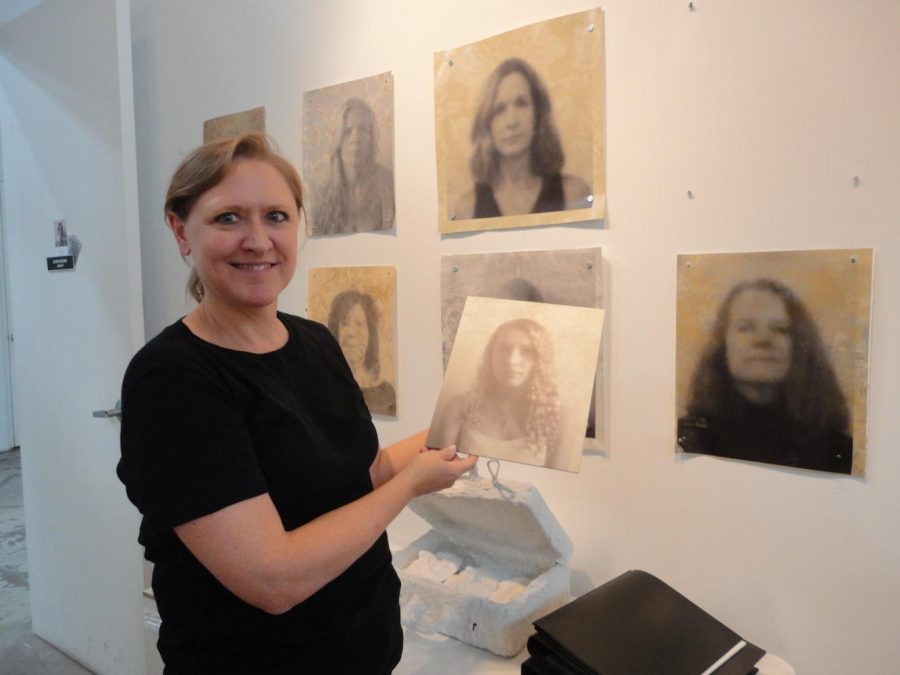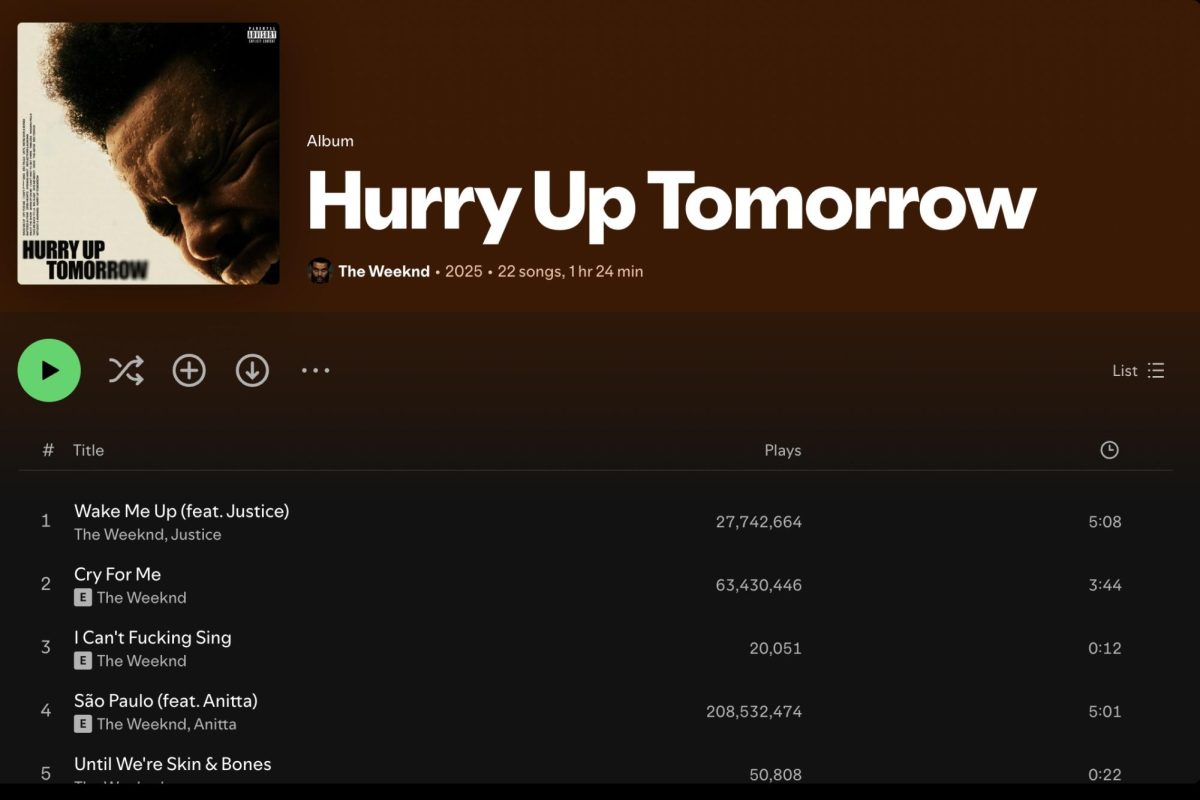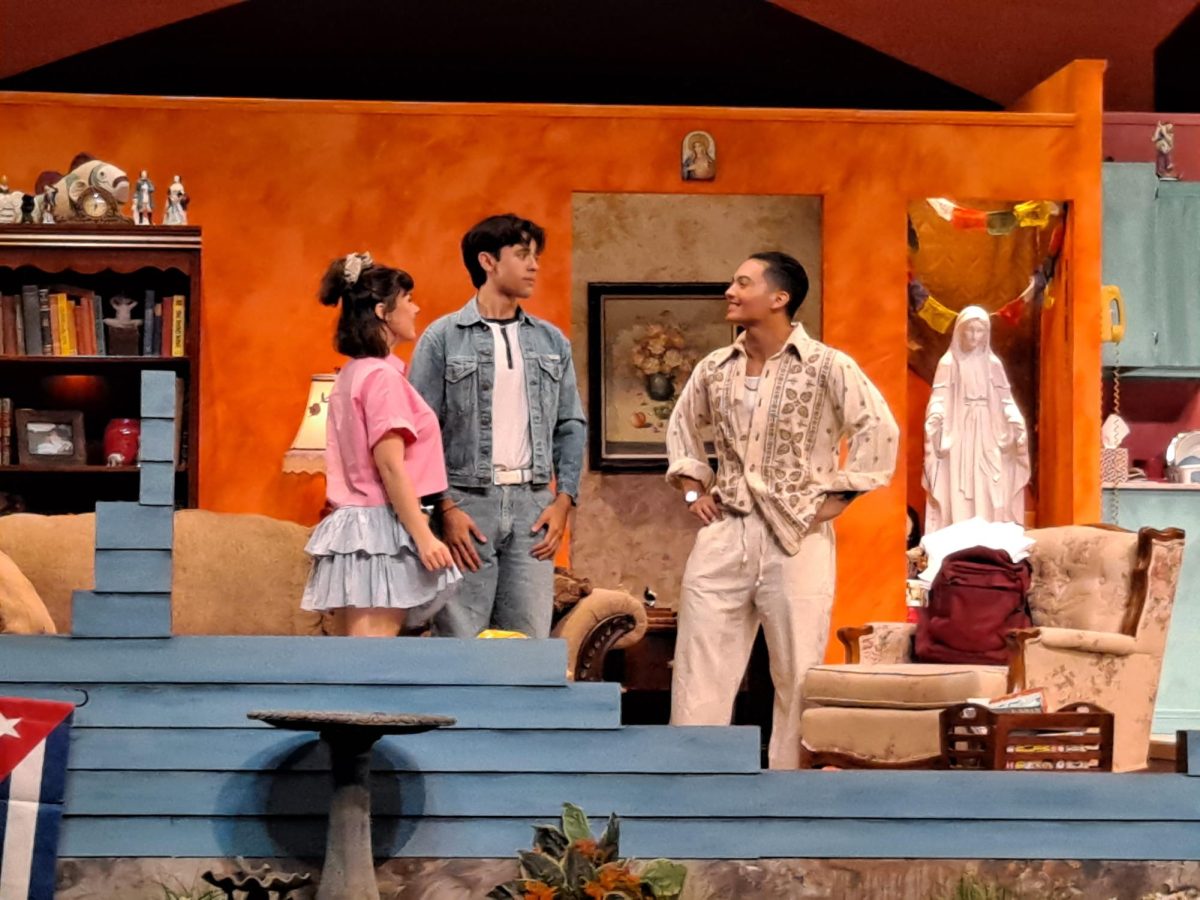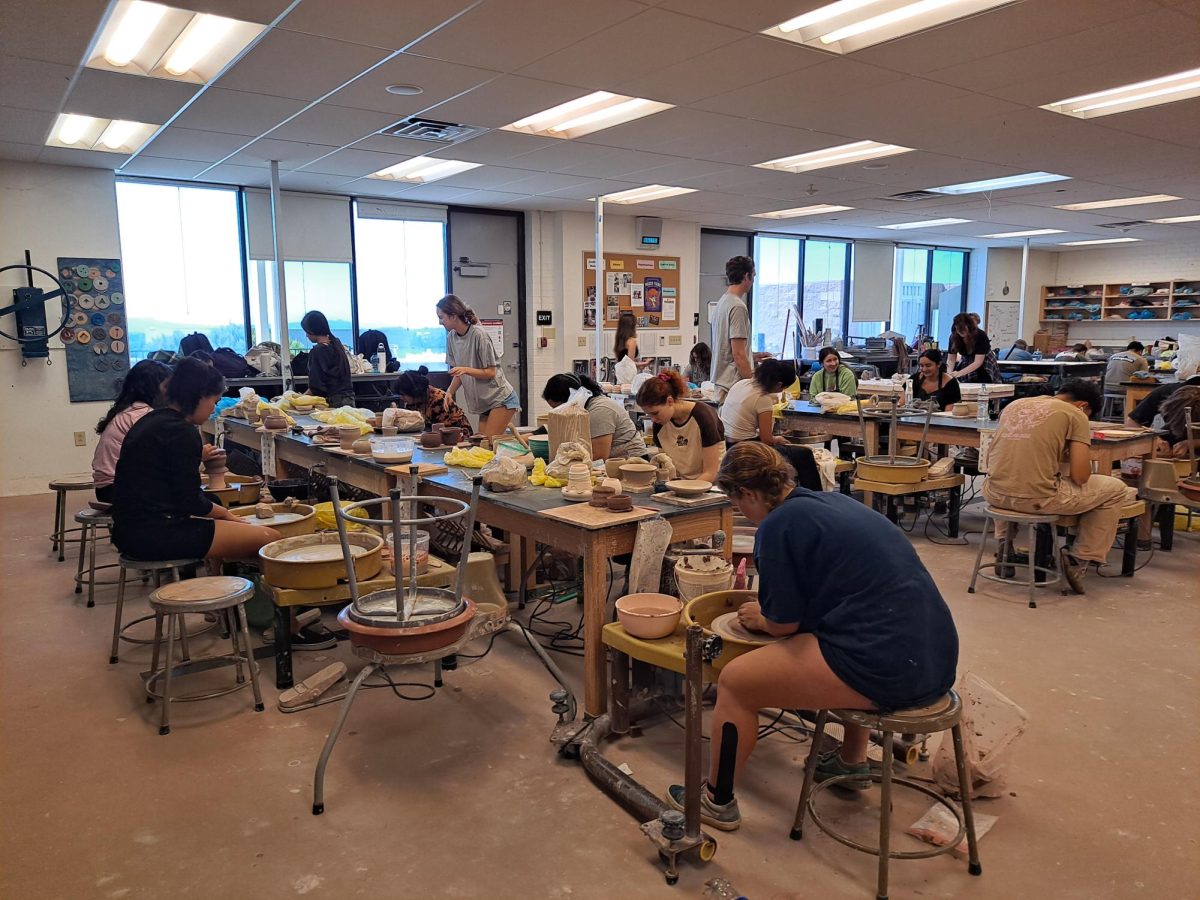The term ‘wallflower’ was first used in the early 1800s to refer to a woman without a partner at a dance, presumably sitting against the wall. Around the same time, Great Britain repealed a wallpaper tax, which led to all types of wallpaper, including the patterned kind, growing in popularity, and becoming mass produced.
A professional, solo art exhibit based on this concept, The Wallflower Project, opened at Moorpark College’s Art Gallery on Tuesday, Sept. 5, and its clever play on on this term has already got people talking.
“It’s interesting. When you think of a wallflower, you think of an invisible person,” said Kelly Lam, 22, Chemistry major and recent UC Santa Barbara graduate. “Yet you do not focus on the wallpaper [in this artwork], but the people behind it.”
The idea that introverted people are the object of study in these art pieces is ironic in that it turns the meaning of the term ‘wallflower’ on its head. Those who shun attention have become the center of attention through the artist’s hand and vision.
“I like looking at [these pieces]. I like how the flowers are fading into the photographs of the people,” said Lucia Resendiz, 19, Biology major. “It adds a lot of mystery and makes you want to study them more.”
Multi-media artist Janine Brown conceived The Wallflower Project in 2010. Iowa born and raised, Brown earned a Bachelor of Fine Arts in Craft Design at Iowa State University, and an Associate of Applied Science in Fashion Design at the Fashion Institute of Technology, New York. After working as a designer in the fashion industry in the 1990s, Brown earned an MBA in Marketing at NYU, and went on to dabble in abstract artwork with oils, acrylics and soft pastels in the early 2000s.
Brown relocated to the West Coast and entered the Los Angeles art scene in 2010. Working out of her Studio in Santa Monica, Brown reflects on the evolution of her huge body of work from its inception.
“What you see today [in the gallery] is a result of experimenting with different techniques, and trial and error over the past seven years,” said Brown.
These photographic portraits are double exposed to a pinhole camera, and overlaid with wallpaper patterns that are also double-exposed, whereby traditional portraiture is combined with wallpaper images to produce ghost-like double images, said Brown.
“The resulting double exposed images create a ghostly portrait that requires the viewer to take notice and spend time to see the person before them,” said Brown.
This effect conflicts with ‘a wallflower,’ a term used to describe a shy or socially awkward person, who fades into the background like a flower on a wall.
Brown’s inspiration for this project sprang from a conversation she had with an artist friend at a party. Her friend made the observation that at social gatherings she and her husband attended, everyone would look at her husband, not her.
“And that was it. That’s what sparked my thinking about the social stigma of people who are wallflowers,” said Brown.
The origin of the term wallflower, combined with inspiration drawn from her own experiences and conversations at social gatherings, led Brown to conceive The Wallflower Project.
“I wanted to bring the Wallflower to the forefront – not by taking straight portraits of them, but portraying the fading ‘Wallflower, … that requires the viewer to take notice and spend time to see the person before them,” said Brown.
One such viewer, Interim Vice President, Julius Sokenu has taken notice.
“The shadow effect over the people’s faces [in the pieces] is somewhat devoid of color,” he said. “It has this attraction to unveil it, to ask [ourselves] what it means.”
The people who have been photographed, and then covered by a variety of different wallpaper patterns in the exhibit suggest a mystery that is indicative of our times, said Sokenu.
“There are lots of folks walking around invisible. There is so much we don’t know about students. There’s a whole range of backgrounds, which are hidden,” said the vice president, who was former Dean of Media and Visual Arts. “But if we probe a bit we can get to the person, and our mission at the college is to figure out their struggles, what inspires them, and to help them succeed in this complex world.”
Art Professor, Erika Lizée has been organizing professional solo artist exhibits at the Moorpark College Art Gallery for the last eight years.
“Each show offers something new, a variety of ideas and technical skills that our students can learn about,” said Lizée, who is also the gallery director. “What [Brown] has done– looking at shy, introverted types of people with her technique of double exposure, I think our younger students transitioning into adulthood can relate to. The message is ‘you’re not alone in your social anxieties, and figuring out where you fit into the world.'”
Indeed, Vice President Sokenu believes having art on display is essential to the college.
“[Art] allows us to have a dialogue that we would not otherwise have an opportunity to participate in. It’s almost a religious moment,” said Sokenu. “One of our goals it to provide students a venue for expression, and the gallery provides students and the community a place to display their art, [and] offers jumping-off points for those conversations to happen.”
Don’t miss this opportunity to see The Wallflower Project for yourself, and join this conversation. The exhibit continues until October 6 at Moorpark College Art Gallery in the Admin. Building, and is open 9 a.m. to 9 p.m. Monday through Thursday, and 8 a.m. to 12 noon on Fridays. For more information contact Professor Lizée at elizee@vcccd.edu







